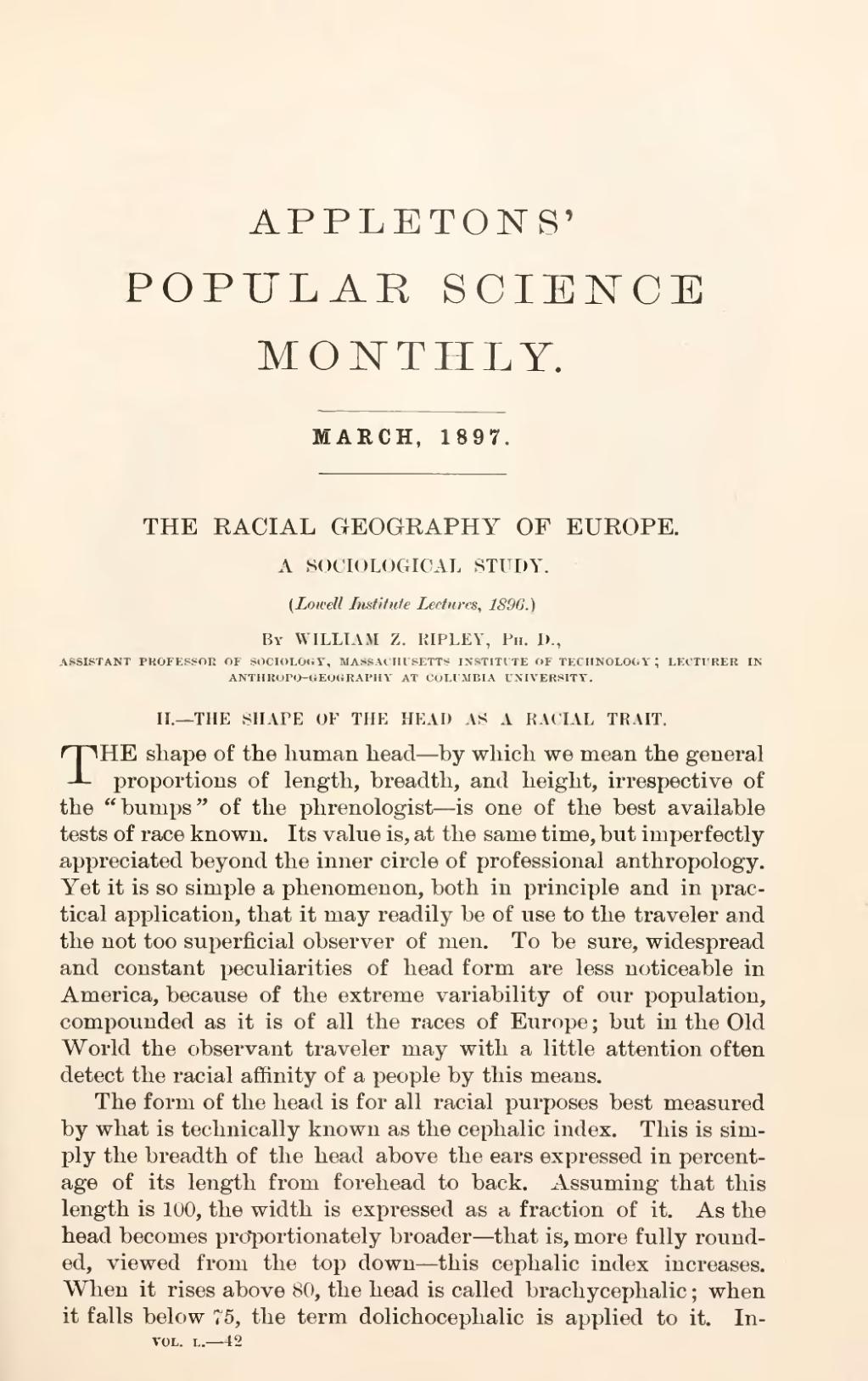APPLETONS’
POPULAR SCIENCE
MONTHLY.
MARCH, 1897.
| THE RACIAL GEOGRAPHY OF EUROPE. |
A SOCIOLOGICAL STUDY.
(Lowell Institute Lectures 1896.)
By WILLIAM Z. RIPLEY, Ph. D.,
ASSISTANT PROFESSOR OF SOCIOLOGY, MASSACHUSETTS INSTITUTE OF TECHNOLOGY; LECTURER IN ANTHROPO-GEOGRAPHY AT COLUMBIA UNIVERSITY.
II.—THE SHAPE OF THE HEAD AS A RACIAL TRAIT.
THE shape of the human head—by which we mean the general proportions of length, breadth, and height, irrespective of the "bumps" of the phrenologist—is one of the best available tests of race known. Its value is, at the same time, but imperfectly appreciated beyond the inner circle of professional anthropology. Yet it is so simple a phenomenon, both in principle and in practical application, that it may readily be of use to the traveler and the not too superficial observer of men. To be sure, widespread and constant peculiarities of head form are less noticeable in America, because of the extreme variability of our population, compounded as it is of all the races of Europe; but in the Old World the observant traveler may with a little attention often detect the racial affinity of a people by this means.
The form of the head is for all racial purposes best measured by what is technically known as the cephalic index. This is simply the breadth of the head above the ears expressed in percentage of its length from forehead to back. Assuming that this length is 100, the width is expressed as a fraction of it. As the head becomes proportionately broader—that is, more fully rounded, viewed from the top down—this cephalic index increases. When it rises above 80, the head is called brachycephalic; when it falls below 75, the term dolichocephalic is applied to it. In-
